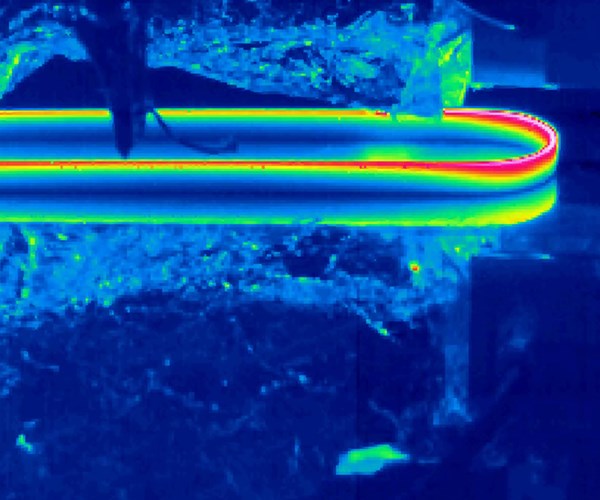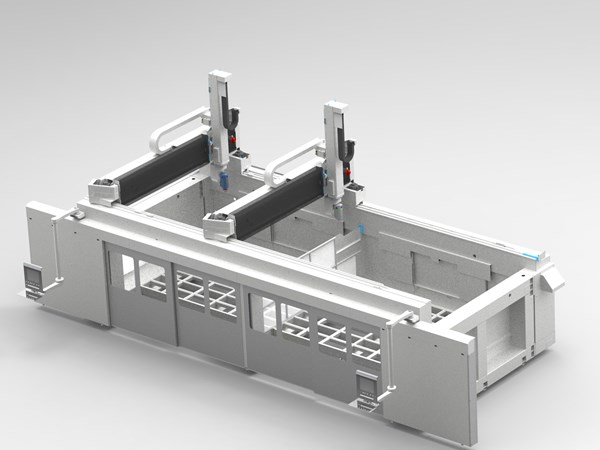High-speed 3D printing with fiber reinforcement
Italy-based CMS has partnered with Fraunhofer IWU to develop a high-speed, extrusion-based process for the 3D printing of fiber-reinforced thermoplastic parts. Video included.

Heat map of CMS Kreator laying down fiber-reinforced thermoplastic resin.
CMS SpA and Fraunhofer IWU report that they are working on an R&D partnership focused on the development of a new hybrid system for high-speed 3D printing and machining of thermoplastic composite parts.
The new system, named CMS Kreator, will be available in several configurations and sizes, to cover a variety of industrial needs, mainly targeted toward the manufacture of prototypes and special parts. The range of materials used by CMS Kreator includes ABS, PA and high-performance polymers, mixed with short fiber carbon fiber and glass fiber to provide 40% fiber content.
Potential applications include mockups and jigs, as well as tools and molds able to withstand the cure temperatures. All materials used by the system are granulate, like that currently used in injection molding, are readily available on the market at a much lower cost when compared to the cost of standard 3D printing materials.
The process is extrusion-based and designed to lay down thin strands of material quickly (eight times faster than standard FDM processes) and immediately cooled, for the building of "birdbone" and similar structures.
The programming software tools are based on solutions available on the market. CMS also can provide the system with a 5-axis milling unit for finishing, and with a fiber placement unit for the fabrication of thermoset carbon fiber composites.

CMS Kreator.
Related Content
-
The potential for thermoplastic composite nacelles
Collins Aerospace draws on global team, decades of experience to demonstrate large, curved AFP and welded structures for the next generation of aircraft.
-
Combining multifunctional thermoplastic composites, additive manufacturing for next-gen airframe structures
The DOMMINIO project combines AFP with 3D printed gyroid cores, embedded SHM sensors and smart materials for induction-driven disassembly of parts at end of life.
-
TU Munich develops cuboidal conformable tanks using carbon fiber composites for increased hydrogen storage
Flat tank enabling standard platform for BEV and FCEV uses thermoplastic and thermoset composites, overwrapped skeleton design in pursuit of 25% more H2 storage.
















